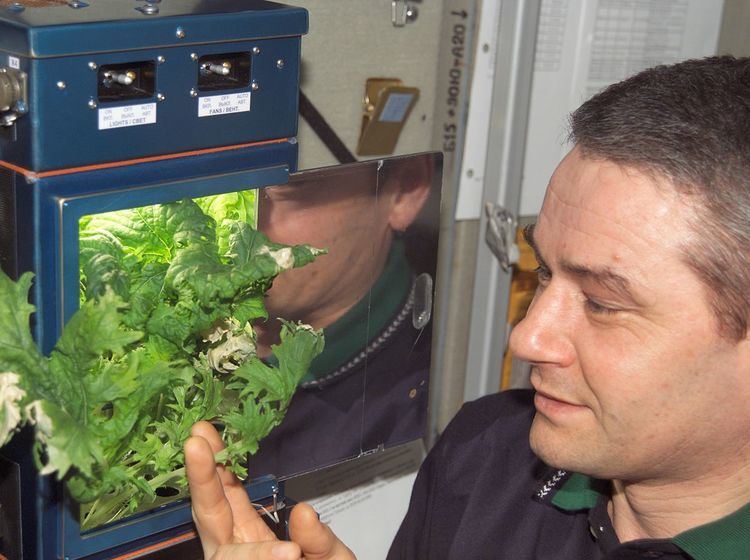 | ||
Space farming refers to the cultivation of crops for food and other materials in space or on off-Earth celestial objects – equivalent to agriculture on Earth.
Contents
Farming on the Moon or Mars share many similarities with farming on a space station or space colony, but would lack the complexity of microgravity found in the latter. Each environment would also have differences in the availability of inputs to the space agriculture process: inorganic material needed for plant growth, soil media, insolation, relative availability of carbon dioxide, nitrogen and oxygen, and so forth.
Introduction
Supply of food to space stations and proposed interplanetary spaceships is staggeringly expensive. Furthermore, the impracticality of resupplying interplanetary missions make the prospect of growing food inflight appealing. The existence of a space farm would aid the creation of a sustainable environment, as plants can be used to recycle wastewater, generate oxygen (10m² of crops produces 25% of the daily requirements of 1 person, or about 180-210grams of oxygen), continuously purify the air and recycle faeces on the space station or spaceship. This essentially allows the space farm to turn the spaceship into an artificial ecosystem with a hydrological cycle and nutrient recycling.
Supply of foodstuffs to others is likely to be a major part of early off-Earth settlements. Food production is a non-trivial task and is likely to be one of the most labor-intensive, and vital, tasks of early colonists. Among others, NASA is researching how to accomplish space farming.
Technical challenges
A variety of technical challenges will face colonists who attempt to do off-Earth agriculture. These include:
Experiments
Crops experimented with
Following crops have been considered for use in space farms: potatoes, grains, rice, beans, tomatoes, paprika, lettuce, cabbage, strawberry
